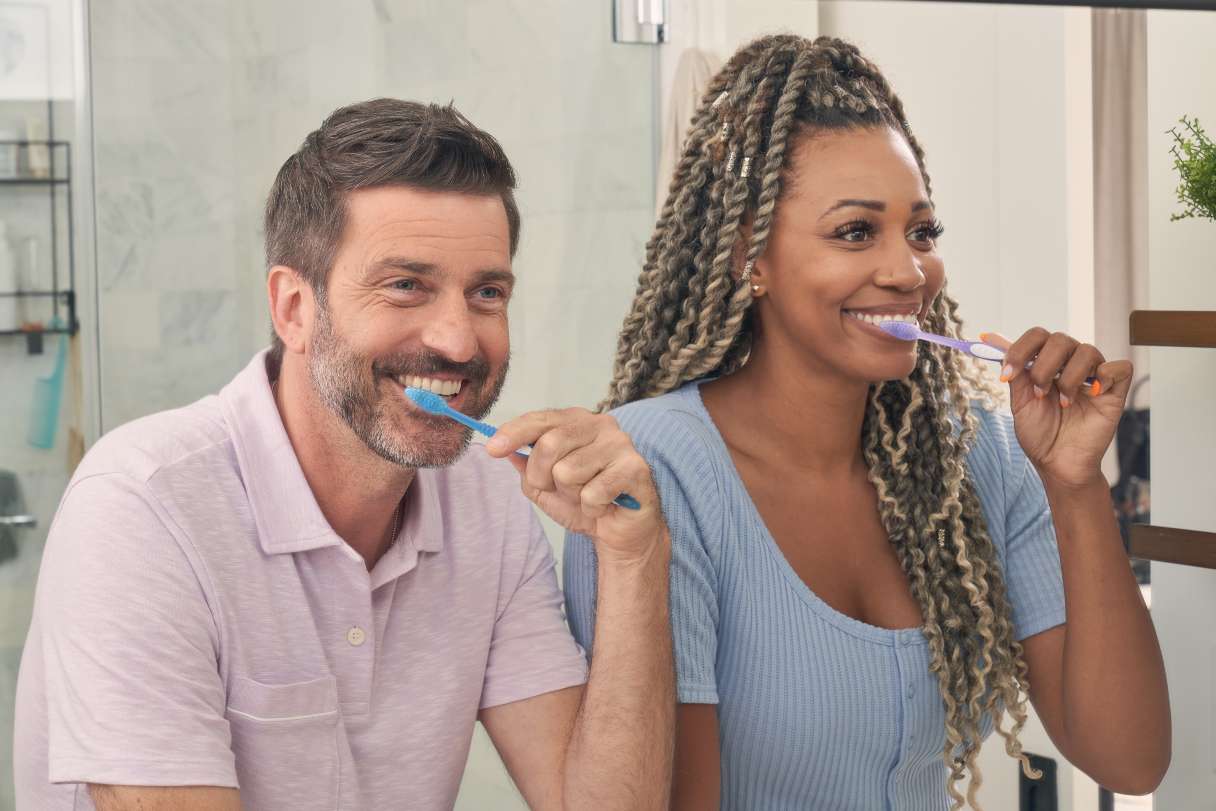If you’ve caught yourself clenching or grinding your teeth when stressed or have woken up with unexplained sore or tired jaw muscles or facial pain, you may have bruxism.
Bruxism is on the rise and so is the collateral damage from it, including cracked and chipped teeth and temporomandibular joint (TMJ) disorders.1
Stress is a common trigger.1 And while you can’t prevent every one of life’s stressors, there are lifestyle modifications and treatments that can help. This article will cover those and much more.
What Is Bruxism?
Bruxism is a medical condition in which a person involuntarily clenches or grinds their teeth. Children and adults can have bruxism, and it frequently goes undetected.2
Grinding is more common while a person is asleep, making it more likely for a partner or parent to notice it. However, it can happen while awake, too. On the other hand, jaw clenching tends to be more common during waking hours, and is often associated with periods of stress, frustration or intense concentration.3
While bruxism and TMJ disorders are often confused, they represent distinct conditions. Bruxism can cause problems with the temporomandibular joint, such as jaw pain and misalignment. TMJ disorders can also cause headaches, facial pain, ear pain and trouble opening your mouth.4
Common Causes of Bruxism
There’s no single specific cause of bruxism, but there are several factors that can lead a person to develop it, including:2
-
Emotions, such as stress, nervousness and low mood
-
Lifestyle habits, such as smoking, drinking alcohol or consuming caffeine
-
Genetics, as bruxism may run in families
-
Certain medications, such as those used to treat depression, attention deficit hyperactivity disorder (ADHD) and seizures
-
Misaligned, crooked or missing teeth5
-
Sleep disorders5
In children, bruxism is less likely to be caused by stress and might instead be caused by:5
-
Allergies, especially if they affect breathing
-
Irritation inside the mouth
-
Misaligned teeth
Signs and Symptoms of Bruxism
Even if you grind or clench your teeth in your sleep or subconsciously, there are likely to be signs. If you have bruxism, you may experience any of these symptoms:2
-
Sore, tight or tired jaw muscles
-
Tooth sensitivity
-
Headache
-
Facial pain
-
Smooth or flattened tooth surfaces
-
Loose teeth
-
Worn tooth enamel
How Is Bruxism Diagnosed?
If you suspect you may have bruxism, you should see a dentist. To diagnose bruxism, a dentist will likely:2
-
Ask about your medical history. They will ask about your specific symptoms and how often they occur. They may also ask about any stressors that may be affecting you.
-
Examine your teeth. By performing a dental examination, your dentist can look for signs of bruxism, like damaged teeth or dental restorations.
-
Examine your jaw and face. Your dentist will check your jaw for pain and tightness, and your face for areas of tenderness.
You may also want to see your primary care provider if you’re clenching or grinding your teeth because bruxism can be caused by a medication you’re taking or an underlying medical condition that must be addressed. For instance, you may need a sleep study if a sleep disorder, such as sleep apnea, is suspected as the cause of your bruxism.5
Bruxism Treatments
Treatment for bruxism can vary depending on its causes as well as any resulting complications, such as tooth damage or TMJ disorders. The cost of treatments varies based on the type of treatment, insurance coverage, your location and other variables.9
Here’s an overview of some treatments that may be used if you clench or grind your teeth.
Stress management
If stress is a contributing factor, your healthcare provider may recommend lifestyle changes and therapies to help you cope with stress and anxiety. Managing your stress may be enough to reduce tension so you stop clenching or grinding your teeth.6
Mouth guards
A mouth guard cushions and separates your upper and lower teeth to help protect them from damage and prevent grinding and clenching.2
Behavioral changes
Your healthcare provider will likely recommend behavioral changes to practice at home. These are to help you be more aware of your clenching and grinding habits and change your resting jaw position.2
Biofeedback
Biofeedback is a cognitive behavioral therapy technique that uses positive feedback to change the way your muscles behave so you can control your jaw clenching and teeth grinding. It’s typically used for sleep bruxism, but there’s some evidence that it can also help treat clenching and grinding while awake.7
Medication
Medication may be used for short periods depending on your cause and symptoms. This can include anti-anxiety medications to help reduce stress, muscle relaxants to reduce jaw muscle tightness and pain or sedatives if you have a sleep disorder.6
Physical therapy
If you’re experiencing muscle pain and stiffness, your healthcare provider may recommend physical therapy so you learn how to stretch and relax your muscles.6
BOTOX® injections
BOTOX injections are sometimes used to treat bruxism. They work by temporarily relaxing your jaw muscles and alleviating pain.6
Dental treatments
You may need dental treatment, such as dental crowns or teeth contouring, to repair teeth damaged from grinding and clenching.2
Bruxism Treatment Costs
These are the U.S. average cost ranges* for some of the treatments that may be used for bruxism, according to CareCredit’s Average Procedural Cost study.
| Bruxism treatment | Average U.S. price range |
|---|---|
|
Dental exam |
$50 to $3508 |
|
Mouth guards |
$250 to $9758 |
|
Botox injections |
$95 to $3,142 per treatment8 |
|
Dental crowns |
$488 to $3,254 each9 |
|
Teeth contouring |
$142 to $435 per tooth9 |
Tips to Help You Stop Grinding Your Teeth
Here are some tips that may help you stop grinding or clenching your teeth:3
-
Make a conscious effort to keep your lips and teeth apart so you don’t clench your teeth.
-
Set an alarm or place notes where you’ll see them to remind you to relax your jaw.
-
Practice good sleep hygiene, such as taking a warm shower or bath before sleep, avoiding screen time for a couple of hours before bed and sleeping in a dark and quiet room.
-
Don’t smoke.2
-
Limit your intake of alcohol and caffeine.2 Avoid it altogether for a few hours before you go to bed.6
-
Try to eliminate stressors, when possible.
-
Engage in relaxing activities, such as yoga, meditation and exercise.
-
Have regular dental exams.
-
Apply an ice pack or wet heat to soothe sore or swollen jaw muscles.
Financing Bruxism Treatment With the CareCredit Credit Card
Whether you're getting a mouth guard or other bruxism treatment or you're simply paying for a dental exam, the CareCredit credit card can help you pay for costs not covered by insurance.** Use our Acceptance Locator to find a dentist or oral surgeon near you that accepts CareCredit. Use the CareCredit credit card, again and again, to pay for your health and wellness wants and needs, and download the CareCredit Mobile App to manage your account, find a provider on the go and easily access the Well U blog for more great articles, podcasts and videos.
In addition to dental care, you can also use your CareCredit credit card for pet care, cosmetic, vision, hearing, health systems, dermatology, pharmacy purchases, spa treatments and so much more within the CareCredit network. How will you invest in your health and wellness next?
Author Bio
Adrienne Santos-Longhurst is a writer who has been covering health and lifestyle for almost two decades. Her work has appeared in Healthline, Insider, Medical News Today and more.








